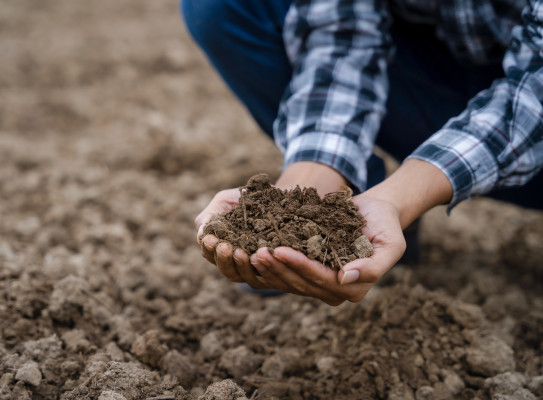Soil contaminants

Earth’s chemically and physically diverse surface soils reflect natural variation and the impact of human activity.
Soil is a vital foundation for the economic wellbeing of Aotearoa New Zealand, through its critical role in agriculture, livestock, forestry, freshwater fisheries and mineral exploration. It also directly affects our individual and collective wellbeing, through freshwater quality, soil contamination, food production, human and animal health and erosion.
Heavy metals and metalloids are naturally occurring in the environment, and while many are essential in small quantities for human health, some elements are toxic in large quantities.
These elements can make their way into our soil through air pollution, historic vehicle emissions, disposal of fossil fuel residues and household waste, deterioration of paints from older houses, treated building materials and fertiliser applications.
Our soil chemistry research focusses on quantifying the elemental abundance in our soils, what are natural concentrations, what have been introduced by human activities and understanding how these contaminants move through our environment.
Geochemical mapping
We undertake geochemical surveys and analyse the concentrations of elements in our near-surface soil, to better understand spatial variations and highlight where human activities have increased contaminants such as heavy metals.
We use industry standard analytical methods for determining concentrations; inductively-coupled plasma mass spectrometry (ICP-MS) and x-ray fluorescence (XRF).
Our geochemical atlases can be used by regional and local authorities to help identify locations where mitigation or remediation of contaminants might be warranted.
The Geochemical Atlas of Aotearoa New Zealand(external link) is the first study of this scope and scale for New Zealand, covering the full length and breadth of the country from Cape Reinga to Stewart Island. It is a foundational resource of use to researchers, policy makers, industry professionals and the public interested in New Zealand’s soil chemistry.
We’ve also published geochemical atlases for Wellington(external link), Dunedin City(external link), and southern New Zealand(external link), and carried out geochemical surveys for Auckland City, Buller-east, Nelson-Marlborough and Otago-northern Southland.
Soilsafe Aotearoa
GNS Science was instrumental in establishing the community science project Soilsafe Aotearoa(external link), and for delivering the project between 2021 and 2023 with the University of Auckland.